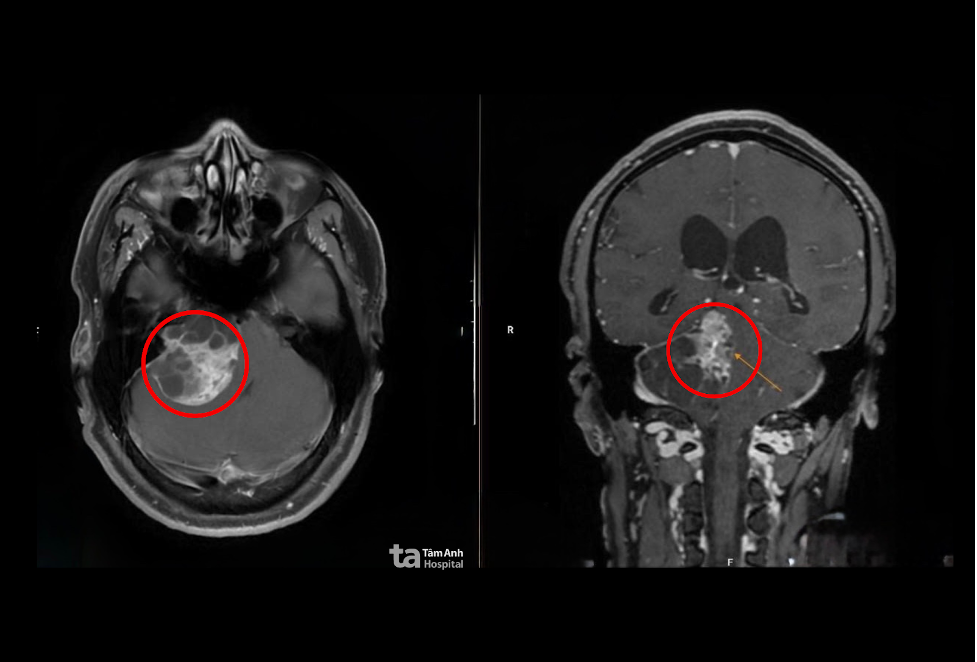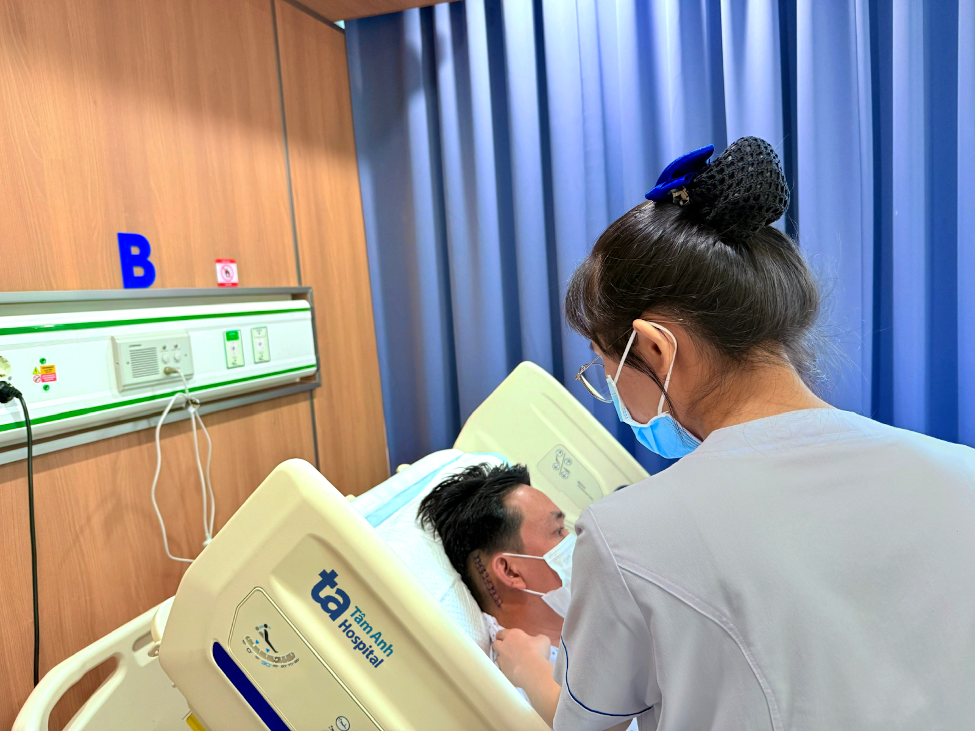Khoi's symptoms persisted for months, but he attributed them to stress and didn't seek medical attention. Recently, his tinnitus worsened, and he began experiencing unsteadiness and frequent falls. He then visited the Tam Anh General Hospital in District 7, where vestibular function tests revealed impaired vestibulo-ocular reflexes.
Dr. Nguyen Tri Minh Tri, from the ENT Center, conducted a videonystagmography (VNG) test, which detected unusual spontaneous vertical eye movements that intensified with fixed gaze, along with signs of central vestibular dysfunction. "These signs can indicate damage to the central nervous system, particularly the cerebellum or brainstem," Dr. Tri explained. An MRI 1.5 Tesla scan revealed a 4 cm tumor in Khoi's brain.
Dr. Chu Tan Si, Head of Neurosurgery at Tam Anh General Hospital's Neuroscience Center, stated that the tumor displayed characteristics of a vestibular schwannoma (eighth cranial nerve), with a large size and a grade 4 classification – the highest on the surgical scale for vestibular schwannomas. The tumor extended from the inner ear canal to the posterior cranial fossa, occupying the left cerebellopontine angle. This caused compression and displacement of the brainstem, affecting vital functions like breathing, circulation, and movement. The tumor presented a risk of increased intracranial pressure, obstructed cerebrospinal fluid flow, leading to hydrocephalus and brainstem herniation.
 |
The MRI 1.5 Tesla scan reveals the tumor compressing Khoi's brainstem. Photo: *Tam Anh General Hospital* |
A multidisciplinary team of doctors recommended microsurgery to remove as much of the deep-seated tumor as possible. The surgical team used AI-integrated microscopes, AI-powered neuronavigation, and neurophysiological monitoring equipment to precisely locate the tumor and protect vital cranial nerves.
The team performed a left retrosigmoid craniotomy, one of the most challenging approaches in neurosurgery. This area contains critical structures like cranial nerves 5, 6, 7, and 8, and the brainstem – the control center for movement, balance, and vital functions. During the surgery, the surgeons opened the left occipital bone and drained some cerebrospinal fluid to soften the brain and create space to access the tumor.
According to Dr. Si, the tumor had a necrotic center, and its edges adhered to the 7th cranial nerve (facial nerve) and brainstem, requiring precise dissection to avoid permanent facial paralysis.
After nearly three hours, the surgeons removed about 95% of the tumor. The remaining portion, deeply embedded and attached to the brainstem, was preserved to avoid impacting critical neurological functions. All related cranial nerves, especially the facial nerve, remained intact, preserving the patient's left facial muscle movement. The biopsy confirmed a schwannoma, a benign tumor arising from the nerve sheath, commonly found in the vestibulocochlear nerve.
Post-surgery, Khoi's tinnitus resolved, his facial muscles were symmetrical with no signs of weakness, and he could walk easily and maintain balance.
 |
A nurse checks and cares for Khoi's incision before discharge. Photo: *Tam Anh General Hospital* |
Dr. Si explained that symptoms like persistent unilateral tinnitus, gradual hearing loss, dizziness, vertigo, and loss of balance are often mistaken for inner ear disorders or stroke, leading many to underestimate the problem and seek inappropriate treatment. These can be early signs of dangerous brain conditions like vestibular schwannomas, cerebellopontine angle tumors, or cerebrovascular malformations.
If experiencing persistent unexplained symptoms, individuals should consult neurology or ENT specialists at reputable medical facilities equipped with advanced technology for accurate brain scans and timely treatment.
Phuong Thy - Uyen Trinh
*The patient's name has been changed.
| Readers can submit questions about neurological conditions here for doctors to answer. |












